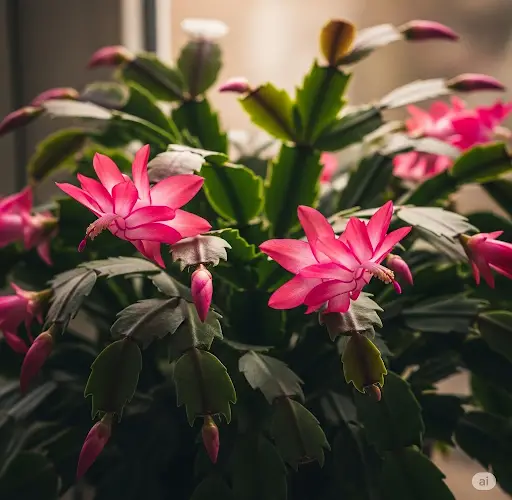The Christmas cactus (Schlumbergera), known for its vibrant blooms during the holiday season, is a popular houseplant cherished for its beauty and relatively easy care. However, to ensure it thrives and blooms year after year, it’s essential to avoid certain common mistakes that can hinder its health and flowering potential.
1. Overwatering
Unlike desert cacti, the Christmas cactus originates from tropical rainforests and prefers a more humid environment. However, overwatering can lead to root rot. It’s crucial to allow the top inch of soil to dry out between waterings. Ensure the pot has proper drainage to prevent water from accumulating at the bottom.
2. Underwatering
While overwatering is a concern, underwatering can also stress the plant. Signs of dehydration include shriveled or limp leaves. Maintain a consistent watering schedule, adjusting frequency based on the season and indoor humidity levels.
3. Excessive Direct Sunlight
The Christmas cactus thrives in bright, indirect light. Exposure to intense direct sunlight, especially during summer months, can cause the leaves to become sunburned or turn reddish. Place the plant near a north or east-facing window where it can receive filtered light.
4. Insufficient Light
On the flip side, too little light can impede blooming. If your cactus isn’t flowering, consider relocating it to a brighter spot, ensuring it still avoids harsh direct sunlight.
5. Frequent Relocation
Once flower buds have formed, moving the plant can cause them to drop. It’s best to keep the cactus in a consistent location during its budding and blooming phases to prevent stress.
6. Ignoring Temperature Preferences
The Christmas cactus prefers temperatures between 60°F to 70°F (15°C to 21°C). Sudden temperature fluctuations or exposure to cold drafts can harm the plant and cause bud drop. Ensure it’s placed away from heaters, air conditioners, and drafty windows.
7. Lack of Dormancy Period
To encourage blooming, the Christmas cactus requires a rest period. In the fall, reduce watering and provide 12-14 hours of darkness daily for about six weeks. This simulated dormancy helps initiate bud formation.
8. Using the Wrong Soil
A well-draining soil mix is essential. Using heavy or dense soil can retain too much moisture, leading to root rot. Opt for a cactus or succulent mix, or amend regular potting soil with sand or perlite to enhance drainage.
9. Overfertilizing
While feeding the plant can promote growth, excessive fertilization can harm it. Use a balanced, water-soluble fertilizer monthly during the growing season (spring and summer). Avoid fertilizing in the fall and winter months.
10. Neglecting Pests
Common pests like mealybugs and aphids can infest the Christmas cactus. Regularly inspect the plant for signs of pests and treat infestations promptly with appropriate insecticidal soap or neem oil.
Final Thoughts
Caring for a Christmas cactus involves understanding its unique needs and avoiding common pitfalls. By providing the right environment, watering appropriately, and ensuring proper light and temperature conditions, your Christmas cactus can thrive and bring vibrant blooms to your home during the holiday season.



